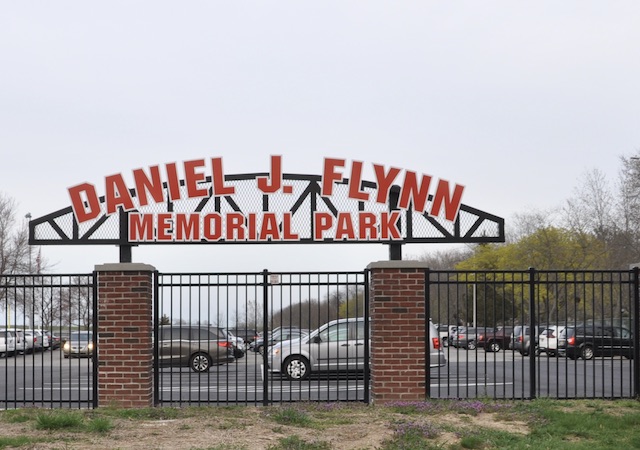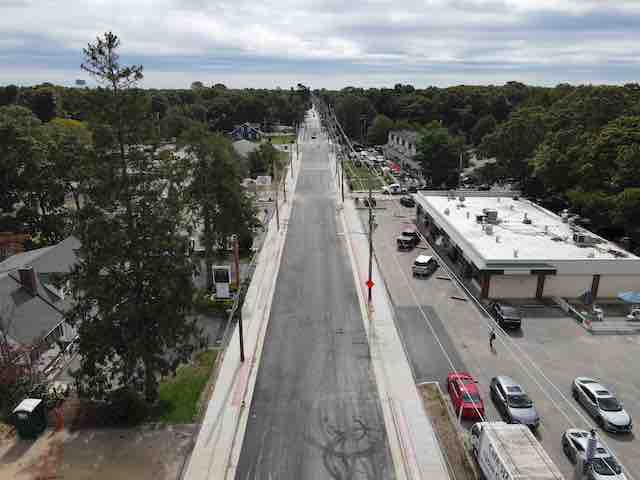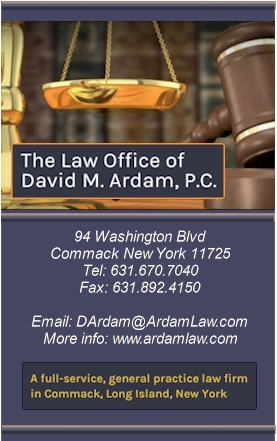Op ED - Three Elephants In The Room, Sewers, a Blog and One Very Important Election
 Thursday, October 24, 2013 at 5:06PM
Thursday, October 24, 2013 at 5:06PM By - Maureen Rossi
The Elephant in the Room is an enormously insightful and informative blog written by Marci Bortman, Director of Conservation Programs for the The Nature Conservancy in Long Island. In operation since 1951, the Conservancy’s primary goal is to protect ecologically important lands and waterways for both nature and people. Bortman’s blog was about nitrogen pollution on Long Island. The subject has been of much discussion as of late; it was brought front and center earlier this year by the Long Island Clean Water Partnership. The group consists of environmental powerhouses like Citizens Campaign for the Environment, Group for the East End, Long Island Pine Barrens Society, and Bortman’s group The Nature Conservancy. They joined forces to come up with viable solutions to the high levels of nitrogen in our waterways and to address the fact that it’s leaching into the water we drink. They say Long Island needs updated water quality standards to reduce the amount of sewage pollution in our local waters and improve, upgrade and modernize existing sewer and septic systems.
The second Elephant in the Room occupied the V.F.W. Hall in Kings Park on Wednesday October 23rd when about sixty community members gathered for the Kings Park Chamber of Commerce Meet the Candidates Luncheon and the subject of sewers arose again and again. One by one virtually every candidate spoke about the proposed sewer plans for Kings Park, some said it should have been included in the proposed 2014 budget, some said it can’t legally be included in that budget because it will serve only some of the population of Smithtown and must be voted on. Some said it will take years, some said they believe the project could begin in the spring. Some candidates were more optimistic than others. President of the Kings Park Chamber Tony Tanzi is a businessman who’s been one of the leading voices calling for sewers in Kings Park. However, his first concern is not the expansion of the business district; this father of four is seriously concerned about the drinking water that lies just beneath the ground. His concern is valid; our aquifers are vulnerable to any and all substances that go into the ground. Suffolk County has approximately 400,000 cesspools/septic tanks. With only twenty-five percent of Suffolk County being served by sewer treatment facilities our drinking supply is something that should concern everyone and social science research done by Bortman and her team at the Conservancy tell us that Long Islanders care deeply about the water they swim in, fish in, live by and drink. However, that same study also showed that most people don’t know where their drinking water comes from, where the waste goes when they flush the toilet and that nitrogen from human waste, fertilizers and fossil fuels are the culprits polluting our bays and harbors.
The Conservancy has been working tirelessly for years to restore estuaries; they acquired 13,500 acres of underwater land and transplanted over 7 million clams in over 100 sanctuaries on our Island. They support the science and policy to protect and restore critical sea grass because we have the data and it tells us that nitrogen loading or excess nitrogen is the number one cause of marsh loss. Marshes are breeding ground for mollusks which clean our water and critical to the environment. With sea levels rising and super storms like last year’s Sandy pound our shores they have created another precarious situation; over 15,000 of our septic systems on Long Island are presently in areas where the water table is less than five feet deep.
What must be done to keep nitrogen out of our aquifers, our bays and estuaries? The experts – the newly formed ecological dream team, The Long Island Clean Water Partnership make several recommendations; but sewers and updated waste treatment plants in Suffolk County would be a crucial start. The good news is it looks like the Bellone administration is on board. In April of this year County Executive Steven Bellone announced grant and loan applications for construction-ready municipal and private sewer infrastructure expansion projects with the county. He says investing in sewers makes both environmental and economic sense. He also feels sewer expansion projects are essential to creating jobs in Suffolk County in a sustainable way. Adrienne Esposito is the Executive Director of Citizens Campaign for the Environment and she feels there are key locations where sewers are a necessity, not a luxury item. The truth of the matter, from an economic standpoint, sewers sound like a luxury item for both Smithtown and cash-strapped Suffolk County. Only $30 million in funding will be made available through Suffolk County’s Asset Stabilization Reserve Fund specifically for sewer expansion projects. Our Town Board votes 5-0 earlier this year to pony up one million to begin the sewer process to show the county we are serious about the project and ready to act on the project. However, the estimated cost for sewers in Kings Park is $20,000,000. One million will come from Smithtown, the county grant would provide three million (if our project is approved), we will receive a three million dollar waiver because Kings Park already has a hookup and we won’t need to pay that fee but where does the other thirteen million come from?
In order to ascertain the grant Smithtown applied for, a sewer project has to be consistent with one of many scenarios; the most applicable for the proposed Kings Park sewer system might be: Local Waterfront Revitalization Plan (our downtown is close to our waterfront), project applicant demonstrates the ability to begin construction within 12-24 months of contract execution, project protects or improves the quality of drinking waters within groundwater-contributing area to public supply wells, areas served by private wells or improves the quality of nitrogen-sensitive water bodies. Okay, I’m no scientist but last latter resonates greatly for our beautiful waterside community – a community that is all down-hill to our bay, our river and estuaries making it most susceptible to nitrogen run-off. Clean drinking water just makes common sense; it’s incumbent for all of us to stand up and demand this. Bortman’s blog tells us that nitrogen in some areas of Long Island are consistent with levels correlated with colon cancer, bladder cancer and non-Hodgkin’s lymphoma. The scariest part of this data is that the levels are still below the federal safe drinking water standard. I checked the Smithtown nitrogen levels, for 2013 we showed 2.0 – 3.3 mgl with the federal regulatory limited being 10 mgl. Should we be concerned? Maybe we need to go back five years and see if our nitrogen levels have risen, forgetting what federal regulatory limits are. The Nature Conservancy says addressing nitrogen pollution and its underlying causes is by far the greatest challenge they’ve had to face since the inception of their organization.
Another one of the specifications for a sewer project to be deemed applicable by the county is: site and its proposed use has all of the following characteristics: promotes to the maximum practical extend long term growth and benefit to Suffolk County, environmentally sustainability components, within a ½ mile to a rail transit hub, mixed use and housing diversity component and creates a place of interest or provides sewer connections for existing commercial or residential properties currently on septic/cesspools in area that do not conform to Article 6. Okay that’s a mouthful but what words in that paragraph should we all be paying attention to? Half mile to rail hub – yes that makes Kings Park a viable candidate, long-term growth to Suffolk County – yikes can we extrapolate here? That’s the kind of statement than can make a community with over 500 acres of new state parkland in the center of it a little bit nervous. Although it’s officially a park, anyone who is paying attention in Smithtown is concerned about what can and will possibly end up at the Nissequogue River State Park. Creates a place of interest – well in all due respect Great Wizard of Sewers (whoever is behind the curtain), all Kings Park residents think Kings Park is a place of interest.
So what’s next? How does the process happen? David Flynn of the Smithtown Planning Department is one of the region’s greatest minds when it comes to planning and sewers. He tells The Messenger that grants go through a consolidated funding application (CFA) and head onto one of ten regional economic development councils in the state. We have our own for Long Island. Then our application is given a numerical score based on certain criteria, we are told there are on hundred applications and only twenty will be chosen. Legislator John Kennedy has been championing sewers for downtown areas in Smithtown since 2005. He worked closely with neighboring Smithtown Legislator Lynne Nowick in calling for a study and has had numerous conversations with the past and Present County Executive on the hot topic. Kennedy gets it, he gets the economic and environmental significance – he wants to be shovel ready if Smithtown gets the green light. Kennedy probably know more about sewers than any other legislator on Long Island – he’s up there with Flynn when it comes to a sewer I.Q., although not a decision maker regarding the grant, perhaps Kennedy is really the Great Wizard of Sewers. Tanzi has had numerous conversations and meetings with Kennedy and says we can’t keep turning a blind eye to the fact that sewers in our central business districts will accomplish three important goals: the expansion of our tax base, the economic expansion that many communities desperately need in addition to the protection of our drinking water. Maybe just maybe there is a third elephant in this opinion piece and it’s the election for Town Supervisor on November 5th. Kings Park is indeed a prime candidate for the sewer grants but how will Bellone and Cuomo make that determination? On November 5th when the polling numbers start rolling in they will have their eyes on Smithtown. We have three candidates running for Smithtown Supervisor – Steve Snair (D) and Bob Creighton (C) speak about Smart Growth, moving forward and infrastructure improvements like sewers. Supervisor Patrick Vecchio touts the high quality of life in Smithtown; he and his comrades don’t admit to any gross problems or failures affecting or facing the town. Three Elephants, Sewers, A Blog & One Very Important Election.







